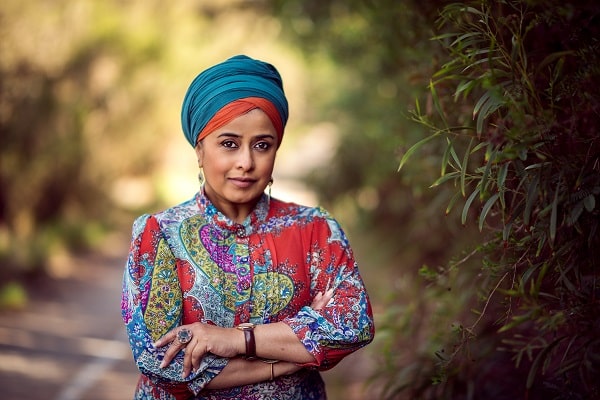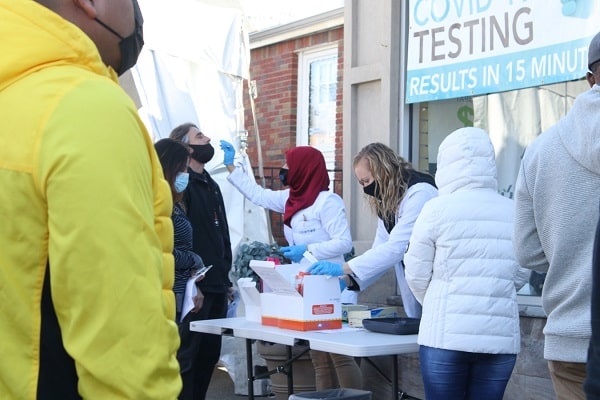It is important to collect data about ethnic backgrounds of people who come forward for COVID tests because it is essential to planning, says Tasneem Chopra OAM, a cross-cultural consultant. She adds that recording demographics from both CALD (culturally and linguistically diverse) and mainstream backgrounds prove more efficient combating certain community transmissions and achieving health equity.
The Health Department confirmed that it is “strongly considering” recording culturally and linguist data during COVID tests, the ABC reported.
AT A GLANCE:
- Given Australia’s ‘diversity data deficit’ is high, Tasneem Chopra, a diversity consultant, urges the government to start recording ethnic data during COVID tests to plan for better services
- She says the only downside of recording ethnic data is the perceptions of the media where CALD communities are labelled as ignorant
- Tasneem highlights that New Zealand is already recording ethnic data during COVID tests and that communities should be the leaders of their own recovery
According to a recent report by the peak national multicultural body Federation of Ethnic Community Councils Australia (FECCA) Australia’s ‘diversity data deficit’ is significantly high which means that we don’t collect enough CALD data. The report, updated in October, also emphasises the damaging effects this deficit has on science, research and adequately representing Australia’s diversity.
“It’s always been seen as too hard, too tricky, too messy,” says Tasneem Chopra, a cross-cultural consultant when asked why Australia’s data deficit is high

We measure gender, ability and physical access, and also the indigenous nature of First Nations people which is obviously important, but we often don’t record cultural data, Tasneem says we know this because “services don’t adequately plan for them [CALD communities]”.
“The fact that we’ve seen in some pockets of the community higher manifestations of COVID occurring indicates the poor messaging that has gone out. We need to do better. We can only do better when we know what to do. We only clearly know what to do if we have the data. You have to join the dots to get to the whole purpose of this whole exercise.” Tasneem told Indian Link.
In the case of Melbourne’s second COVID wave which caused a hard lockdown in Flemington, the cross-cultural consultant says it goes to a greater argument of whether the structural inequalities that we have in place that allow the spread to occur.
“Post the hard lockdown that occurred in Flemington, residents actually had the capabilities and capacity to take care of themselves. There was no ignorance about what needs to be done, it was just about having the resources. There were high congestions of people in flats where lifts were broken which had been reported to housing authorities before the pandemic started, but they’d never been actioned,” she revealed.
Tasneem also mentions the ineffective blame game that comes into play when determining accountability for these clusters.
“Those who are not a part of the community point fingers and say, ‘Oh look, they’re responsible for the spread, for the high numbers. They don’t know, they don’t care”. It’s not ignorance, it’s structural inequality which must be acknowledged and then responded to,” she said.
“Let communities be the leaders of their own recovery. They have the expertise, many of residents in the flats were highly educated, health professionals even. They don’t lack knowledge, it’s simply the opportunity to be able to take the lead when they are more than willing to do so,” Tasneem said
READ ALSO: Read this if you have an elderly parent living alone in India in COVID times

Countries like New Zealand already record ethnicity when testing for COVID which Tasneem looks at as a step in the right direction for health equity. She is of the opinion that New Zealand has set a very high bar for the wellbeing of a population and governance in general. Tasneem looks to New Zealand as the standard for best practice.
“They manage the wellbeing of their population where wellbeing is seen as holistic. It’s about knowing your communities, seeing where the vulnerabilities and weaknesses are, ensuring that they can be managed and responded to with the right services and having practitioners from the community lead the way for change to happen. It’s a very positive model, informed by experts in the field as opposed to bureaucrats. That makes a significant difference to the way things are done,” Tasneem remarked. “The fact that they have a wellbeing portfolio where they actually manage and include issues of diversity or health equity is something that we could learn from.”
The only risk Tasneem notes about recording CALD or ethnic data is how the media would present it to the public. She doubts the media would misinterpret the high vulnerability of communities as them being irresponsible.
“When a particular community has a higher rate of infection, that can often be misconstrued as irresponsibility whereas I would look at it as vulnerability. If there is one ethnic group that is presenting higher numbers, this is an indication that better communication is needed or that these communities are exposed to contracting the virus because of the work that they do, they could be frontline workers,” she said.
However, Tasneem points out that with appropriate management and strong leadership from the department and the government, this issue can be resolved.
READ ALSO: The ethics of the COVID-19 vaccine: a multi-faith perspective





